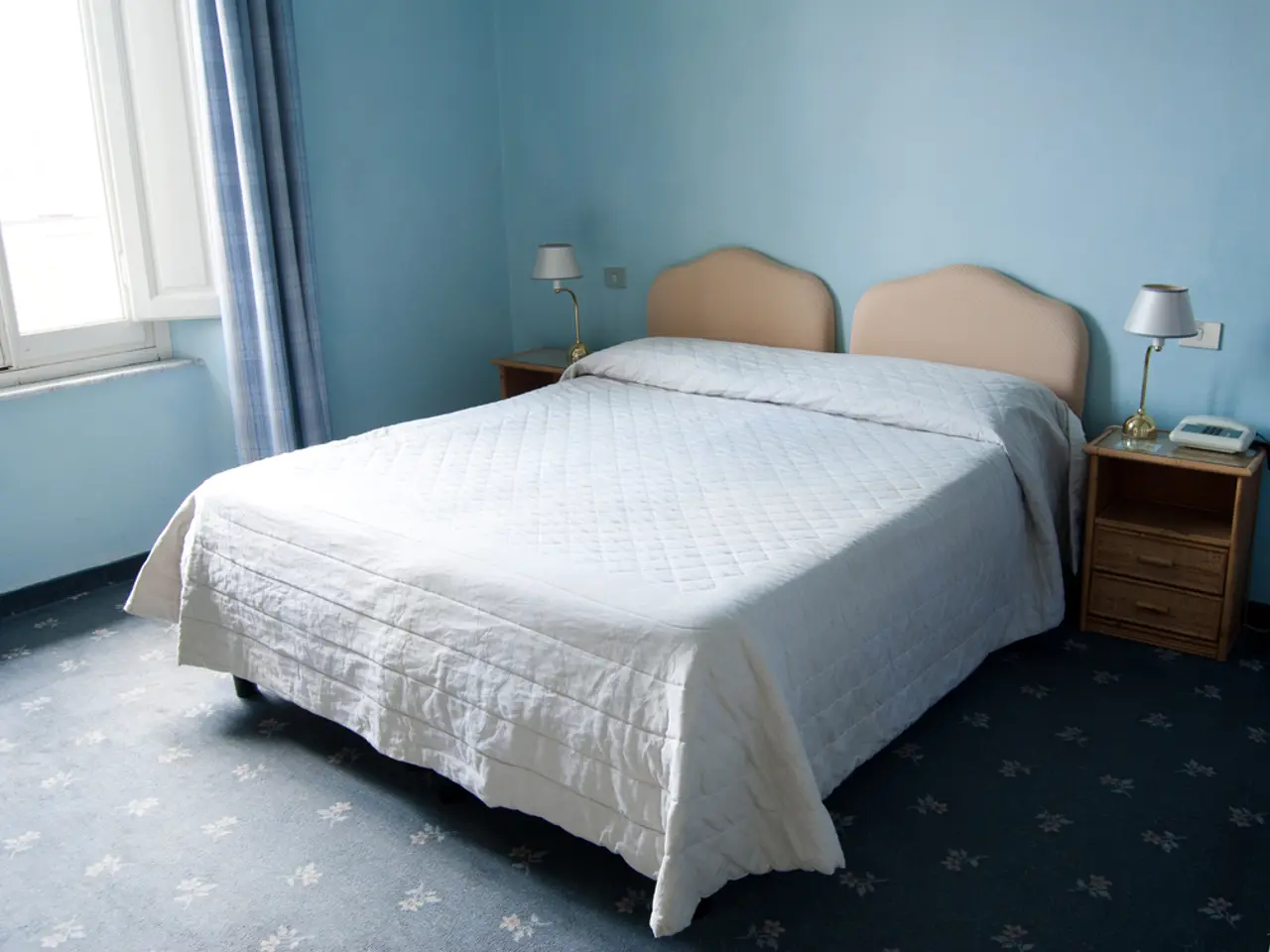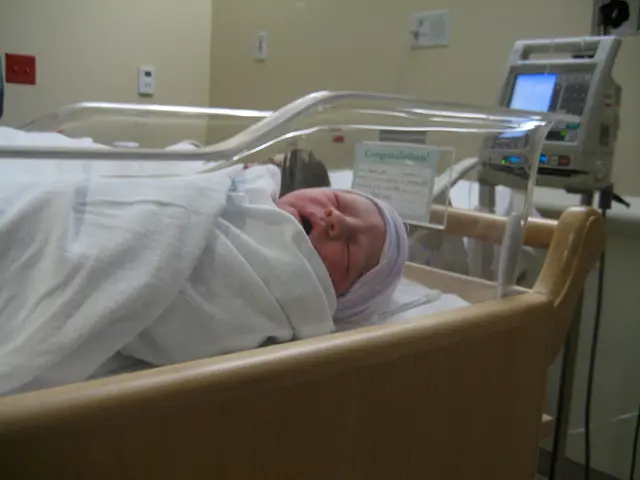Strategies for Enhancing Sleep Comfort in Summer Heat: Expert Guidance for Sleeping in High-Temperatures
As temperatures rise, a growing concern is the potential impact on sleep quality. By the year 2099, people could lose up to 58 hours of sleep annually due to increasing temperatures globally [1]. Those living in warmer countries are expected to experience even more sleep loss [1]. The reasons behind this are multifaceted, with light and temperature playing crucial roles in sleep quality.
Light and temperature have significant impacts on sleep quality, primarily through their effects on the body's circadian rhythm and temperature regulation, which govern sleep onset, maintenance, and the architecture of sleep stages.
Exposure to bright light in the evening or nighttime suppresses the production of melatonin, a sleep-inducing hormone critical for signalling the body to prepare for sleep. This delay in melatonin production shifts the sleep phase later and makes it harder to fall asleep at an earlier or usual time [2]. Conversely, maintaining low light levels before bedtime and minimising screens and artificial light exposure encourages melatonin secretion and facilitates timely sleep onset [2].
The body's core temperature naturally drops in the evening, which is essential for sleep onset and maintenance, especially for deep (slow-wave) and REM sleep stages critical for cognitive function, emotional regulation, and physical recovery [1]. The optimal ambient temperature for sleep is between 16°C and 19°C (60°F to 67°F). When room temperatures exceed about 21°C (70°F), there is increased wakefulness, reduced slow-wave and REM sleep, and overall sleep fragmentation [1][3]. Hot environments cause discomfort, sweating, and disrupt sleep stages, particularly reducing the quality and duration of deep and REM sleep [1][3]. Cold extremities can also fragment sleep if the room is too cool or drafty [1].
To combat these challenges, here are some effective strategies to optimize the sleep environment for better sleep in hot weather:
1. Control Bedroom Temperature: Aim to keep the bedroom around 18°C (64°F). Above 25°C (77°F) can disturb sleep significantly [2][4]. Close curtains or blinds during the day to block heat from entering the bedroom [2]. Open windows in the evening when outside temperatures drop lower than indoors [2].
2. Create a Cooling Breeze: Use fans, and for enhanced effect, place a bowl of ice in front to cool the airflow. Consider air conditioning if available, ensuring it maintains an optimal, not excessively cold, temperature [3].
3. Use Breathable, Natural Bedding and Sleepwear: Choose bedding made from cotton, bamboo, or linen which wick moisture and allow airflow [2]. Avoid synthetic fabrics like polyester which trap heat and moisture [2].
4. Cool Your Body Directly: Sleeping with feet uncovered can help regulate body temperature since feet help dissipate heat. Some find cooling pillowcases by placing them briefly in the freezer helps lower body temperature and improve comfort [2]. Taking a lukewarm or slightly warm bath before bed lowers core temperature through subsequent evaporative cooling, aiding sleep onset [2].
5. Adjust Pre-sleep Activities: Avoid exercise close to bedtime on hot days as it raises body temperature and delays sleep [2]. Dim lights and reduce screen time to promote melatonin production and signal the body it’s time to sleep [2].
By optimizing light exposure for natural circadian rhythm alignment and maintaining a cool, dark, and well-ventilated sleep environment around 16–19°C, people can significantly improve sleep quality—even in hot weather conditions [1][2][4]. Combining these temperature-control strategies with reducing evening light exposure supports better sleep onset, duration, and architecture.
Building a better sleep environment can help fix the damage caused by disrupted sleep, as research shows that those who slept 6 hours or less had over 35% more risk of getting dementia, had lower brain volumes and lower cognition scores [7]. The optimal bedroom temperature for good sleep quality is between 18-21°C, and temperatures above 21°C are associated with shorter sleep duration and longer time taken to fall asleep [8].
In conclusion, understanding the impact of light and temperature on sleep quality is essential for maintaining good sleep hygiene, especially in hot weather conditions. By implementing the strategies outlined above, individuals can improve their sleep environment, leading to better sleep and overall improved health and well-being.
Science highlights the importance of maintaining a cool and dark sleep environment for optimal sleep quality, especially in hot weather conditions. By adhering to temperature-control strategies such as minimizing bright lights, regulating room temperature, and using breathable bedding, individuals can align their circadian rhythm, ensure a cool body temperature, and reduce sleep fragmentation, thereby enhancing their health-and-wellness.




